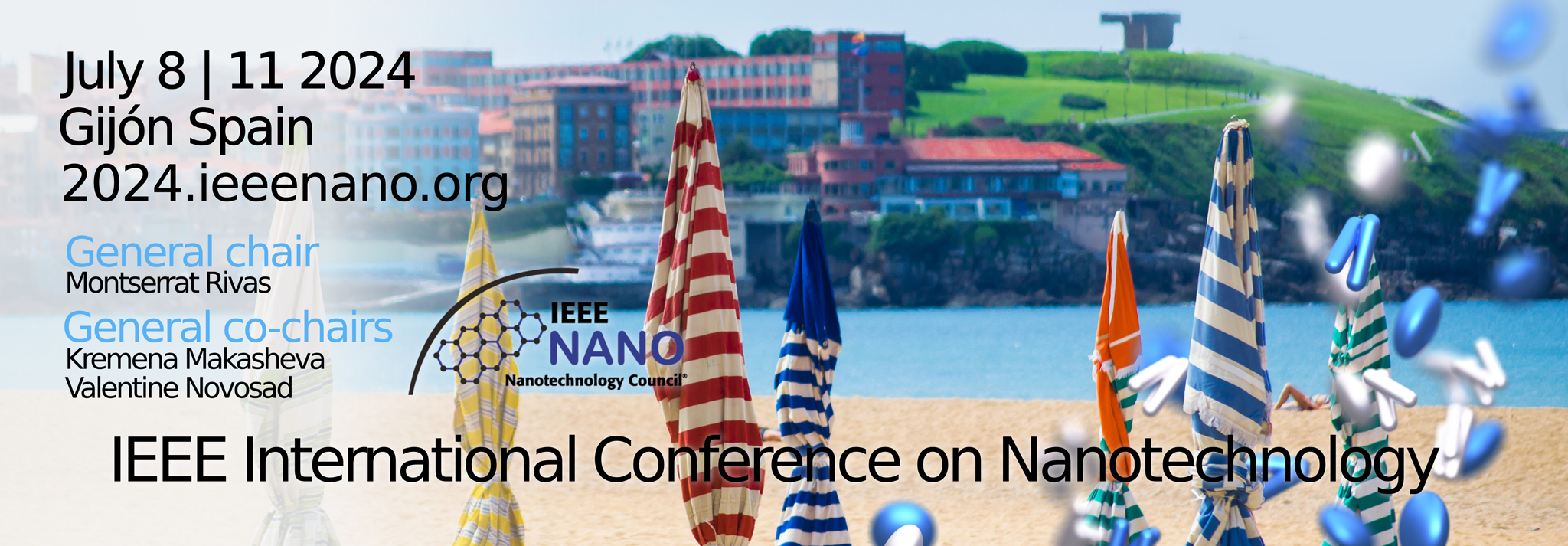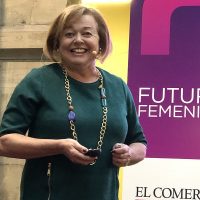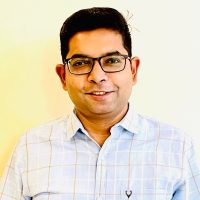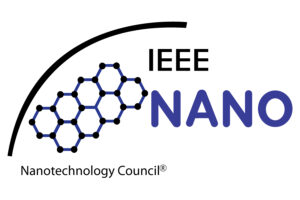- Home
- Program
- Program Overview
- Full Scientific Program
- Technical Categories
- Our motto: LATAM Tutorial Session
- Plenary Speakers
- Keynote Speakers
- Special Invited Sessions
- Young Professionals Networking Event
- Women in Nanotechnology Event
- Tutorials Special Session
- Student Design Competition
- NanoXpress Event
- Workshops Day
- Legacy Project for Gijón
- Authors
- Registration
- Whova App
- Support & Exhibitors
- Venue & Travel
- About
- Blog
- Home
- Program
- Program Overview
- Full Scientific Program
- Technical Categories
- Our motto: LATAM Tutorial Session
- Plenary Speakers
- Keynote Speakers
- Special Invited Sessions
- Young Professionals Networking Event
- Women in Nanotechnology Event
- Tutorials Special Session
- Student Design Competition
- NanoXpress Event
- Workshops Day
- Legacy Project for Gijón
- Authors
- Registration
- Whova App
- Support & Exhibitors
- Venue & Travel
- About
- Blog

PLENARY SPEAKERS
University of Oviedo (Spain)
Nanoscale magnetic textures in 3D: X-ray vector tomography and applications

Nanoscale magnetic textures in 3D: X-ray vector tomography and applications
Abstract
Spin textures in perpendicular magnetic anisotropy materials are key elements to understand magnetization reversal at the nanoscale and in the design of novel spintronic devices that go beyond planar architectures into the third spatial dimension. Recently, it has become possible to obtain precise 3D vector maps of the magnetization with nanoscale resolution by the development of advanced imaging techniques such as X-ray vector magnetic microscopy and tomography at ALBA Synchrotron. Here, we will show magnetic vector tomograms acquired in different magnetic multilayers and nanostructures with non-trivial magnetization profiles across the sample thickness, engineered by the interplay between exchange, anisotropy and magnetostatics. In this way, we are able to observe (i) 3D magnetic singularities (Bloch points) within domain walls and topological dipoles linked by magnetic vortices; (ii) domain walls across the sample thickness in a ferrimagnetic exchange spring; and (iii) the spatial segregation of hyperbolic and circulating Bloch points depending on the local exchange length in a multilayer. Finally, recent results on the propagation of meron spin textures under pulsed magnetic fields and electrical currents will also be presented.
María Vélez pursued her studies at University Complutense in Madrid where she obtained her PhD in 1995. After a postdoctoral stay at University of California San Diego, she joined the Physics Department of University of Oviedo in 1998 where she is currently a Full Professor in Condensed Matter Physics. Her research interests have been centered in the study of vortex propagation in hybrid superconducting/magnetic systems and, more recently, in the study of magnetic textures at the nanoscale in multilayers and in patterned structures in collaboration with the group of Prof. Salvador Ferrer at ALBA Synchrotron.
High Density Interconnect Pathfinding, Intel Corporation (USA)
Advanced packaging technologies for heterogeneous integration (HI)

Advanced packaging technologies for heterogeneous integration (HI)
Abstract
Heterogeneous Integration (HI) is a powerful and crucial enabler for the continued growth of computing and communication performance. Advanced packaging technologies are critical enablers of HI because of their importance as compact, power efficient platforms. This talk will focus on the tremendous opportunities in different application environments and focus on the projected evolution of advanced packaging architectures. Interest in HI research has picked up in recent years and this opens up greater collaboration opportunities between academia and industry. Specific examples, showing how product implementations take advantage of currently available HI technologies, to provide an unprecedented level of performance, will be used to describe the challenges and opportunities in developing robust, next generation advanced package architectures. A broad scope roadmap of the future generated as part of an industry-academic collaboration will be discussed in this context to highlight the opportunities generated by HI. Opportunities in physical interconnect scaling, an important part of the HI Roadmap will be discussed in detail with a focus on processes to create fine pitch, high performance interconnects.
Ravi Mahajan is an Intel Fellow responsible for Assembly and Packaging Technology Pathfinding for future silicon nodes. Ravi also represents Intel in academia through research advisory boards, conference leadership and participation in various student initiatives. He has led Pathfinding efforts to define Package Architectures, Technologies and Assembly Processes for multiple Intel silicon nodes including 90nm, 65nm, 45nm, 32nm, 22nm and 7nm silicon. Ravi joined Intel in 1992 after earning his Ph.D. in Mechanical Engineering from Lehigh University. He holds the original patents for silicon bridges that became the foundation for Intel’s EMIB technology. His early insights have led to high-performance, cost-effective cooling solutions for high-end microprocessors and the proliferation of photo-mechanics techniques for thermo-mechanical stress model validation. His contributions during his Intel career have earned him numerous industry honors, including the SRC’s 2015 Mahboob Khan Outstanding Industry Liaison Award, the 2016 THERMI Award from SEMITHERM, the 2016 Allan Kraus Thermal Management Medal & the 2018 InterPACK Achievement award from ASME, the 2019 “Outstanding Service and Leadership to the IEEE” Awards from IEEE Phoenix Section & Region 6 and most recently the 2020 Richard Chu ITherm Award and the 2020 ASME EPPD Excellence in Mechanics Award. He is one of the founding editors for the Intel Assembly and Test Technology Journal (IATTJ) and currently VP of Publications & Managing Editor-in-Chief of the IEEE Transactions of the CPMT. He has long been associated with ASME’s InterPACK conference and was Conference Co-Chair of the 2017 Conference. Ravi is a Fellow of two leading societies, ASME and IEEE. He was elected to the National Academy of Engineering in 2022 for contributions to advanced microelectronics packaging architectures and their thermal management.
ETH Zürich (Switzerland)
Magnetic Microrobots for Biomedical Applications

Magnetic Microrobots for Biomedical Applications
Abstract
We live in a world increasingly surrounded by robots such as robotic surgical systems, flying drones, autonomous planetary rovers, and robotic appliances. An emerging family of robotic systems are untethered micro- and nanorobots. These tiny vehicles can move in fluids by means of external energy sources such as light, ultrasound, magnetic fields or combinations of these. One of the ultimate goals of small-scale robotics is to develop machines that can deliver drugs or realize other medical missions in confined spaces of the human body. Other applications include water remediation or “on-the-fly” chemistry. The recent rapid developments in small- scale robotics is undeniably related to advances in material science and manufacturing. However, while many applications have been demonstrated, aspects such as complex locomotion, multifunctionality, biocompatibility and biodegradability need to be further investigated for the successful translation of these devices to real applications. To this end, new material-based concepts and novel fabrication schemes are urgently required. This talk will explore various material-based concepts and innovative fabrication techniques to address translational challenges and further enhance the field of small-scale robotics.
Prof. Dr. Salvador Pané i Vidal (Barcelona, 1980) is a Professor of Materials for Robotics at the Institute of Robotics and Intelligent Systems (IRIS) and Co-Director of the Multi-Scale Robotics Lab at ETH Zürich. He obtained his B.S., M.S., and PhD in Chemistry from University of Barcelona (UB). With over 170 publications in international peer-reviewed journals and educational books, Pané’s current focus is on integrating chemistry and electrochemistry with the field of small-scale robotics.
Particularly, Pané specializes in miniaturizing magnetic materials, conductive polymers, and smart materials for targeted drug delivery. Prof. Pané has been coordinator and PI of several EU projects (including FET Open, FET Pro-active, EIC Opern), and has been awarded with an ERC Starting Grant (2013) and a Consolidator Grant (2019). He chaired the COST Action "e-MINDS" from 2015 to 2019. He is also advisory editor for the journals Applied Materials Today (Elsevier) and Small Science (Wiley). He also represents Switzerland in the European Academy of Surface Technology (EAST). He has co-founded two startups, Magnes AG and Oxyle AG. In 2019, he received the Big-on-Small Award for his contribution in the field of micro- and nanorobotics. He was also granted an ERC Proof-of-Concept award in 2019.
Instituto de Ciencia y Tecnología del Carbono (INCAR), Spain

Optimization of graphenic materials for environmental and energy applications
Abstract
Carbon nanomaterials, such as graphene, have been widely used in energy and environmental applications due to their outstanding properties which include electrical conductivity, mechanical stability, and functionality. However, the development of technologies containing graphene materials is still limited by their production at a large scale, mainly due to high costs. Graphene materials are usually obtained from graphite or even other fossils as pre-graphitic materials [1]. In recent years, driven by sustainability and renewability concerns, new green alternatives have been explored as starting materials, such as graphite wastes or different types of biomass and biomass wastes, which can be considered carbon-neutral [2]. These precursors usually contain relatively high carbon content while having low cost and high availability, enabling a drastic reduction in graphene production costs. One of the most significant challenges in the production of graphene materials from wastes, particularly from biomass, is ensuring their quality. The utilization of a heterogeneous raw material usually leads to structural inconsistencies in graphene that should be evaluated in detail [3], particularly when the resulting materials are used in specific applications. Aspects such as the selection of the raw material and optimization of the synthesis methodology are key factors to be taken into account when obtaining graphene materials with specific characteristics.
With this in mind, the first objective of this work is to explore the preparation of graphene materials from different wastes generated in coke and biomass-based industries. The coke-like wastes are obtained from the standard scrapping operation in the blast furnace industry, while the biomass waste comes from the largest European producer of agar–agar, located in the north of Spain, after undergoing processing for energy exploration (pyrolysis technology) [4]. The graphene materials are synthesized using chemical procedures, which must include additional pre-treatments aimed at making the process more environmentally friendly. The obtained graphene oxides (GOs) exhibit suitable characteristics, such as surface chemistry, size/morphology
of graphene-based layers, thus allowing their subsequent application in various research areas, such as the preparation of appropriate electrodes for OER and waste-water remediation [5]. Additionally, the aforementioned GOs are used for the design and development of a novel type of electrochemical sensing platform, labelled as inkjet-printed electrodes (IPEs), which represent an interesting alternative to traditionally used analytical methods for detecting target analytes. Specifically, the graphene-based IPEs are assessed (and compared with traditional electrochemical sensors as modified glassy carbon or screen-printed electrodes) for the electrochemical detection of pharmaceutical compounds (as diclofenac or acetaminophen), which are considered water contaminants of emerging concern. With this aim, GO-based inks are formulated and optimized for subsequent printing and post-processing onto flexible substrates (such as Kapton®), thus obtaining easy-to-use and miniaturized sensors for potential point-of-care analysis of analytes of interest [6].
Acknowledgements
These results are part of the project PID2022-139478OB-100 funded by MICIU/AEI/10.13039/501100011033 and for FEDER, UE, and Spanish National Research Council (ICOOP program, COOPB22006).
Rosa María Menéndez López (born February 12, 1956, in Corollos, Cudillero, Asturias) is a distinguished Spanish scientist. She made history as the first woman to preside over the Spanish National Research Council (CSIC), serving in this role from November 2017 until June 2022.
Rosa earned her degree in Organic Chemistry from the University of Oviedo in 1980 and later obtained her doctorate from the same institution in 1986. She commenced her career at the CSIC, initially at the National Coal Institute, now known as the Institute of Carbon Science and Technology (INCAR), based in Oviedo.
In addition to her role at CSIC, Menéndez López served as Vice President of Science Europe from June 1, 2018, representing the interests of the scientific community across 43 European research and innovation funding agencies. She remains a staunch advocate for women in science and is actively involved in initiatives such as the Margarita Salas Foundation, dedicated to advancing the role of women in scientific fields.
IBM (USA)
Quantum Computing: what, why and what next?

Quantum Computing: what, why and what next?
Abstract
Quantum computing is a fundamentally new model of compute that has the potential to have a wide impact across multiple businesses. The technology has been improving exponentially rapidly – a la Moore’s law – and is projected to continue for foreseeable future. Also, IBM is committed to deliver 100×100 – generated unbiased expectation value for circuit that is 100 quits wide and with depth 100 – by 2024. Newer algorithmic techniques like error mitigation are taking centre stage and it is hoped that they will lay the path to quantum advantage.
In this talk, I will give an overview of what quantum computing is, what it offers, why should we care about it, and why now? I will also cover some of the use-cases that are being explored, provide a perspective on what class of problems are likely to achieve quantum advantage, and what we should we do to be quantum ready.
Shesha Raghunathan joined IBM in 2011 and is currently Global Lead for Startup Ecosystem in IBM Quantum. He is responsible for all engagement touch points with quantum startups– including technology access, collaboration, go-to-market, networking opportunities.
In his previous role, he was part of strategic partnership team in IBM Quantum that explored opportunities to engage with Governments/Research Labs on large deals. Prior to that, he was part of Electronic Design Automation (EDA) Timing analysis development team and worked on various aspect of analysis including noise, timing abstraction, reporting along with analytics and machine learning.
Shesha got his PhD in Electrical Engineering (Quantum Computing) from University of Southern California, LA in 2010. His current research interests include near-term quantum algorithms, circuit optimization and quantum machine learning.
Applied Physics and Photon Science, Stanford University, USA
2D semiconductors

2D semiconductors
Abstract
2D semiconductors, such as the transition metal dichalcogenides, exhibit robust and optically bright excitonic states. These states arise from the direct-gap character of the crystals at monolayer thickness and their reduced dielectric screening. We will review our understanding of such excited states, including the new characteristics that emerge through stacking layers of different semiconductors as heterostructures and the associated moiré effects present for slightly misaligned crystal lattices. We hope in this talk to explain some of the distinctive electronic and optical properties of these systems, as well as their potential for applications in optoelectronics and quantum information science.
Tony Heinz is a Professor of Applied Physics and Photon Science at Stanford University, with a courtesy appointment in Electrical Engineering and a joint affiliation with SLAC National Accelerator Laboratory. Heinz received a BS degree in Physics from Stanford University in 1978 and a PhD degree, also in Physics, from the University of California at Berkeley in 1982. Heinz was subsequently at the IBM Research Division in Yorktown Heights, NY until joining Columbia University in 1995 as a Professor of Electrical Engineering and Physics. At Columbia, he served as a Scientific Director of the Columbia Nanoscale Science and Engineering Center (NSEC) and of the Energy Frontier Research Center (EFRC). He was also the President of Optica in 2012. Heinz joined Stanford University in 2015, also serving as the Director of the Chemical Sciences Division at SLAC from that time until 2019. From 2017 to 2022, he was the Associate Laboratory Director for Energy Sciences at SLAC. Heinz is known for his research into the properties and dynamics of nanoscale materials, particularly 2D materials, through the creative use of optical and laser-based techniques. He is a Fellow of several professional societies, including the IEEE, as well as the US National Academy of Sciences.



